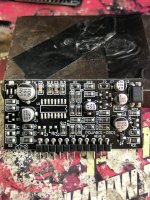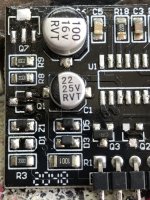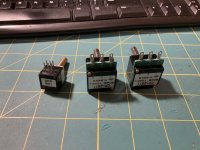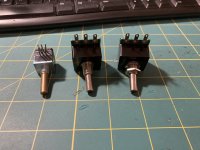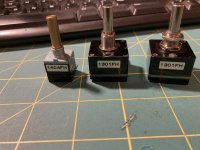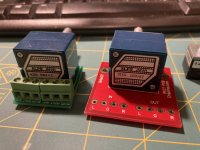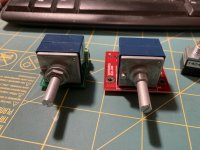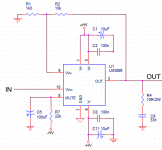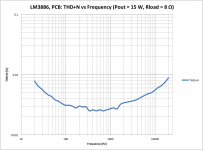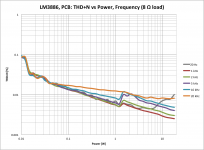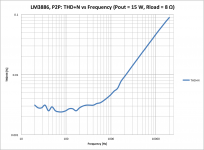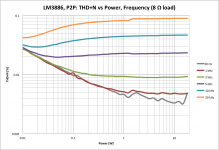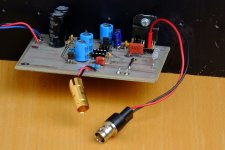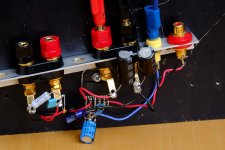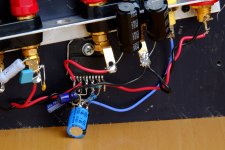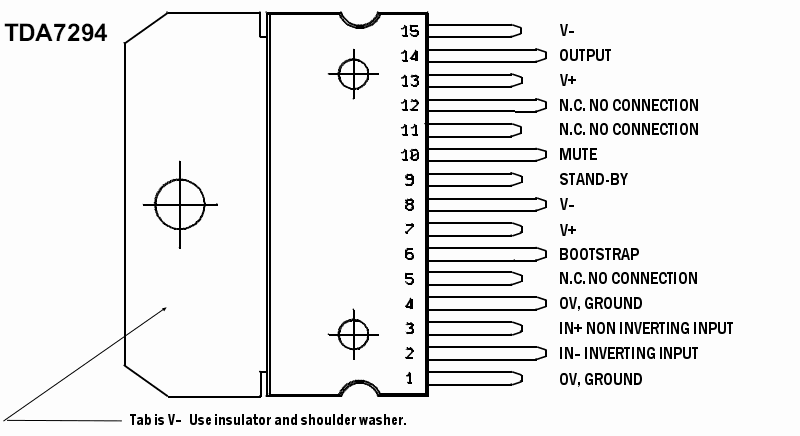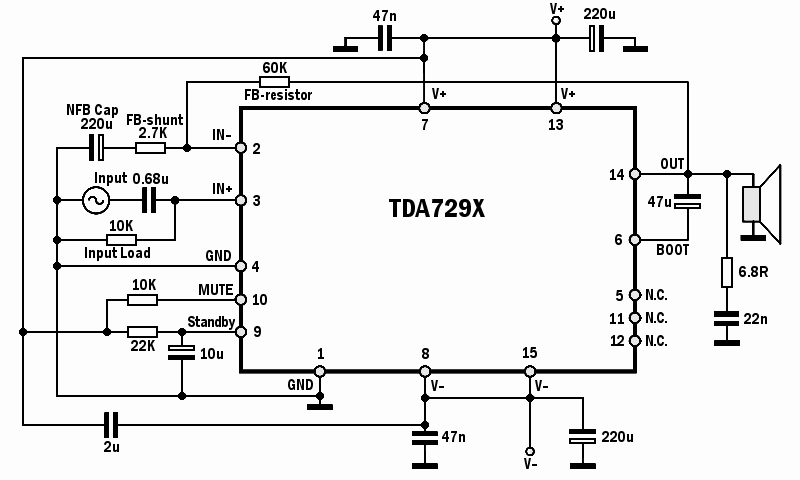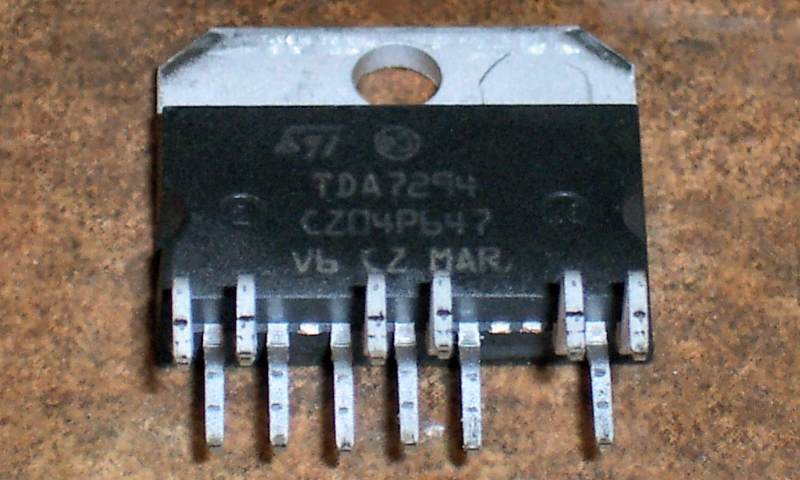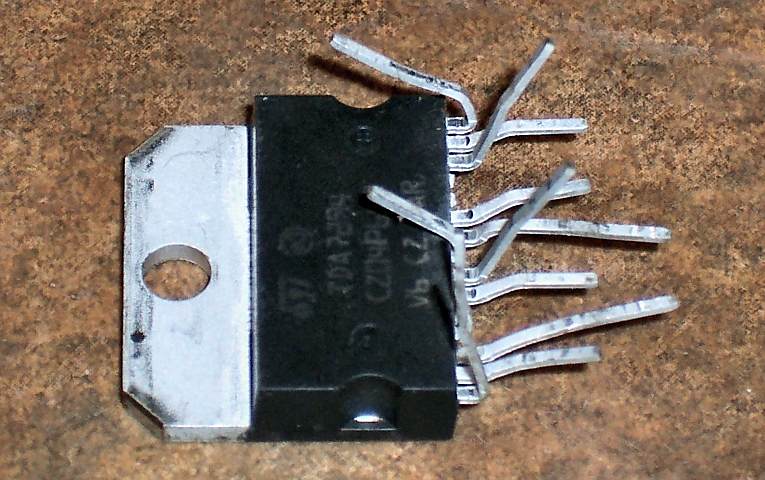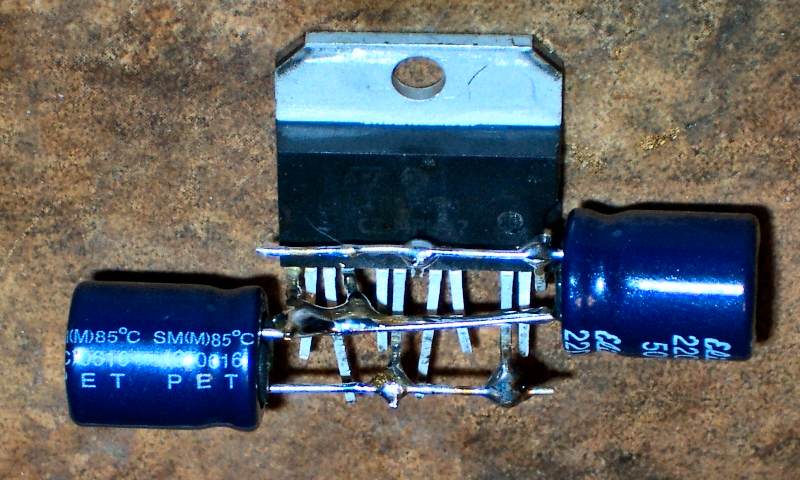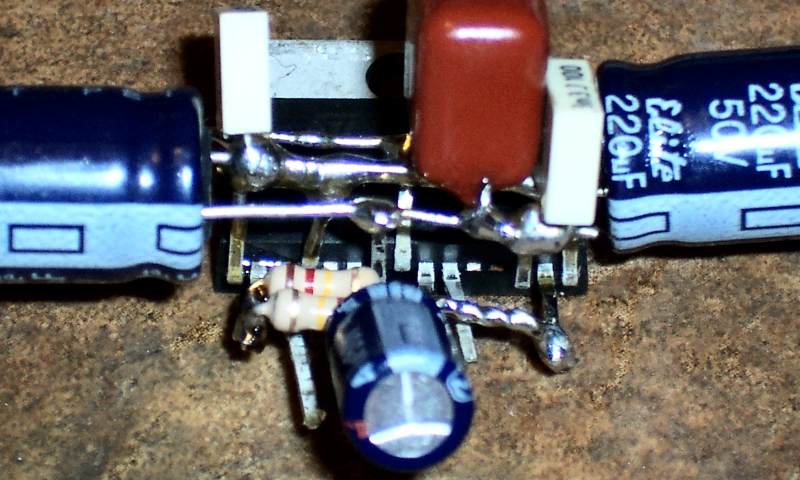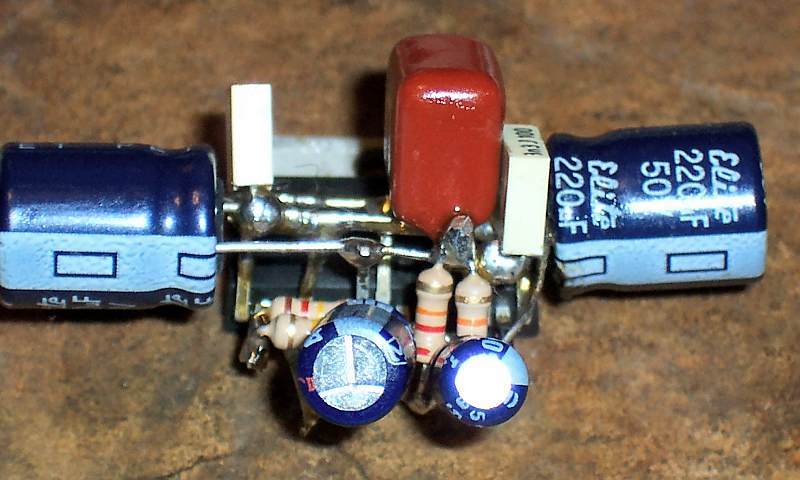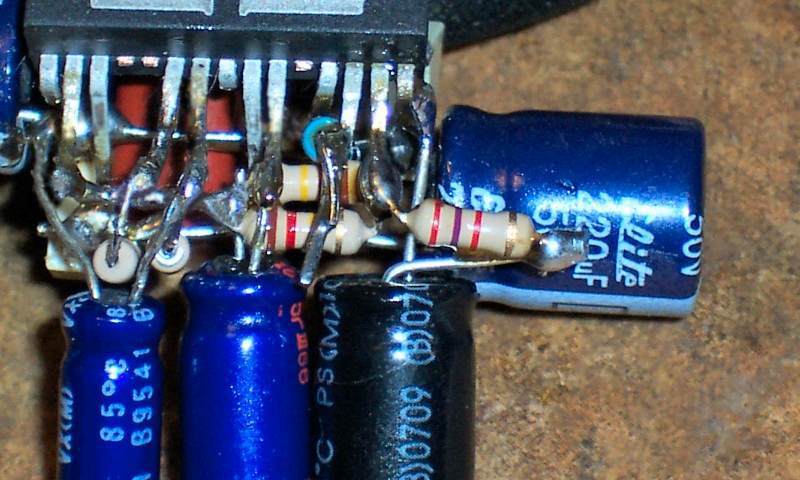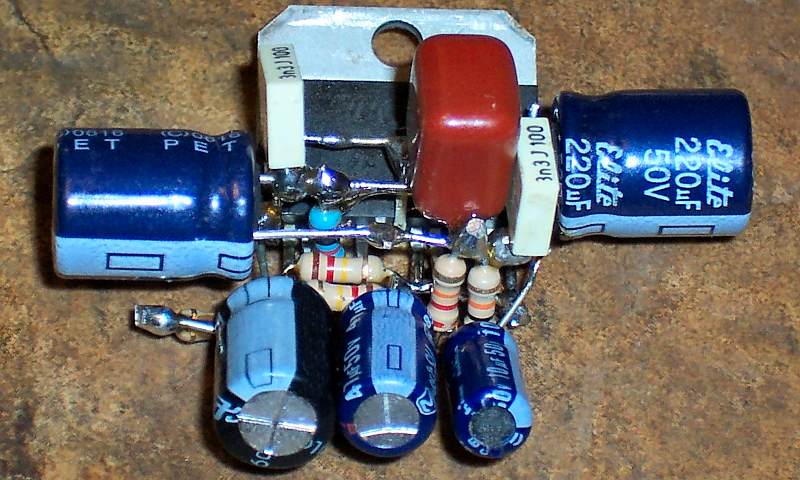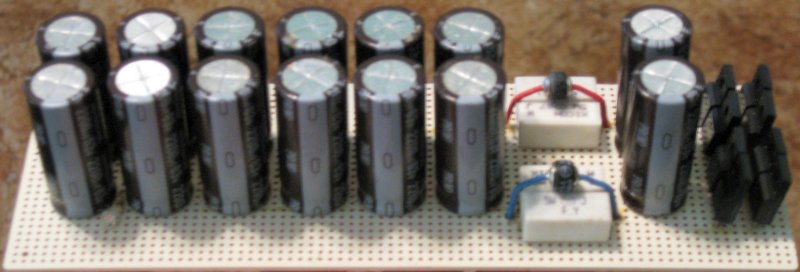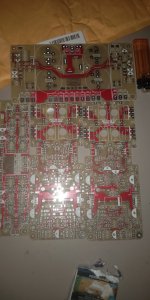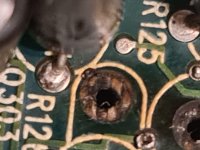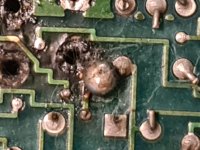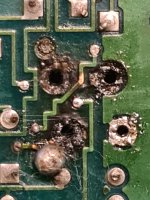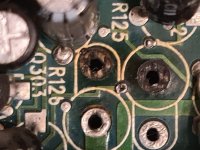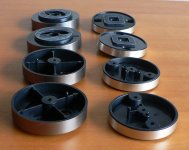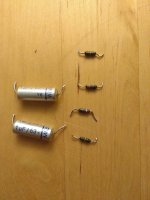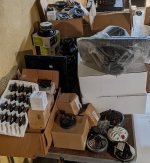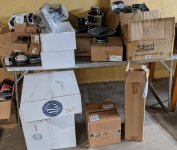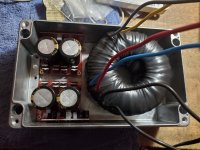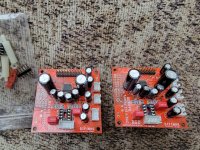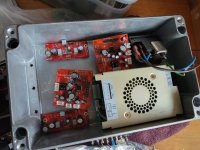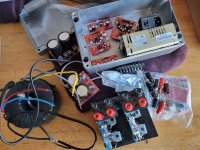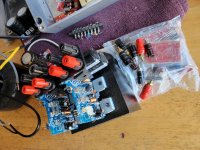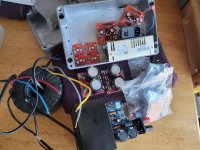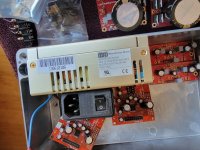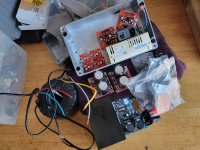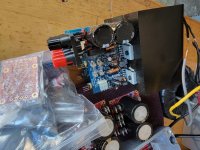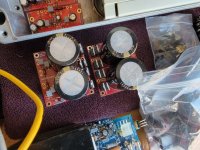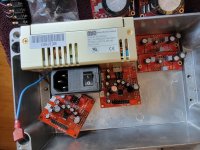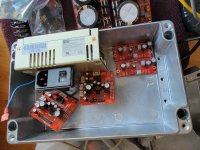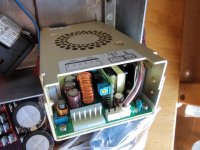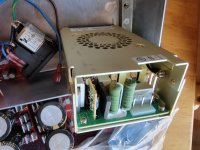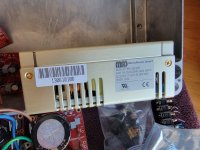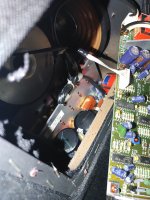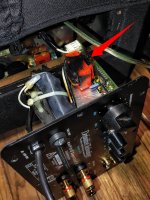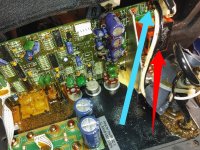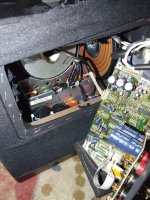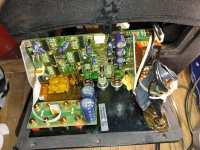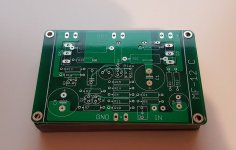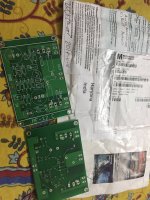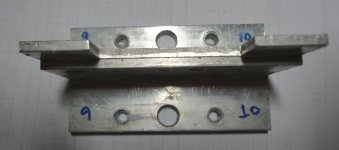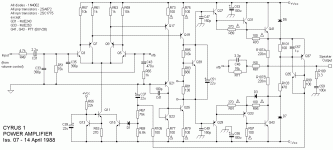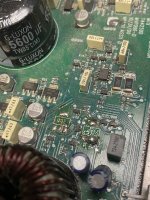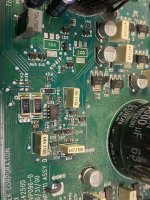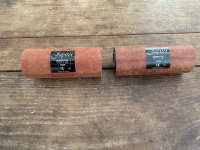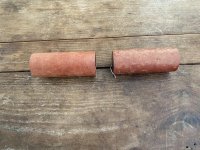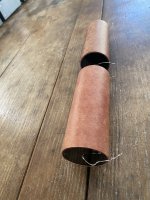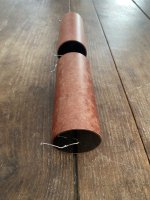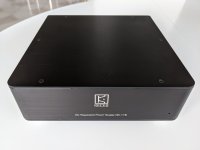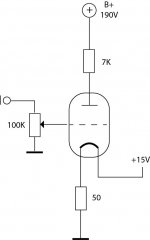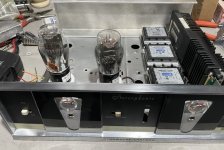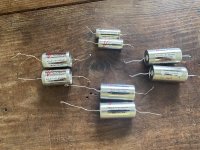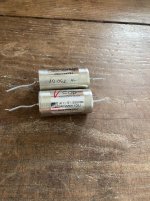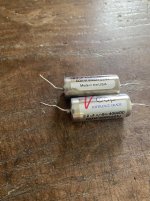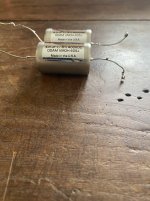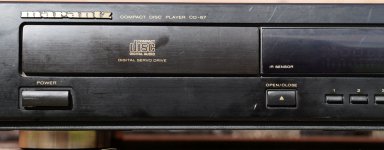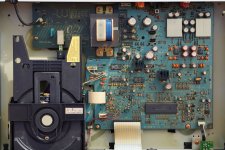Unity gain line stage
This is the story of a project that mutated. It started out with some surprising measurements on a batch of ECC81s; despite their relegation to the lowest of castes by the tube fashionistas, I found that these are very low distortion tubes. Also cheap and readily available. So, thought I, let's make a new preamp. The old one is about to turn 25 and was built in the days when my sources were much different than they are now.
By the time I was done, the ECC81s were history (they're finding application in my next published circuit, a small power amp with LED biasing). And the circuit had mutated into various species, each of which had their own virtues and faults. One of them, at least, is actually pretty novel. They all perform well. And they're all suitable for pedagogical exposition and auditory enjoyment.
My format here will be a three stage proposition (with an intermission to consider power supplies), starting with the simplest, most conventional circuit, moving on to a somewhat unconventional approach, then mutating off into outer space. Each stage will anticipate the next so that this series can be followed as a set of construction/instruction projects.
I’ve gone into rather gory detail about choices of components and operating points; one great priority for me is using parts on hand whenever possible. If I specify those parts, no one else can duplicate it. But with knowledge of how the parts were chosen and how things can be juggled around to accommodate other parts, a relative novice can alter things readily with a good chance of success.
So, here we go....
First step: Define requirements
These days, a preamp is almost redundant. Signal sources in my living room include CD, DVD, satellite/cable, and MP3, not an untypical mix. All have roughly 2V output at a low source impedance. My phono will get its own dedicated step-up/equalizer designed to output a similar voltage. So, we need at least 5 inputs, all high level. My power amps are of normal sensitivity (as probably are yours), so we really only need unity gain. A10K input impedance is fine- there will be no weedy sources allowed in MY system!
There's another reason for the choice of 10K as the input impedance- I'm sold on the use of input transformers. Wait, wait, I see you starting to click to the next thread, but hear me out: given the multiplicity and uncontrollability of grounds in a multi-source system like mine, there is a decided advantage to galvanic isolation. There's also a decided advantage to common mode rejection in a noisy (electromagnetically speaking) environment. And at these signal levels and impedances, you can get good bandwidth and very low distortion. As a bonus, the transformer will do a nice job of limiting bandwidth; though some people have a religious belief that more bandwidth is better, there's precious little (ok, NO) evidence that extending bandwidth beyond 20-25kHz is audible. That's no surprise- we don't have sources that provide signal energy more than an octave above that, at best (and rarely). There is plenty of evidence that the consequences of transferring high frequency junk through the power amp ARE often audible, even with the limitations of program material. The transformer specified will take us to 90kHz or a little higher while not passing AM radio or our local CB operators. The canonical taxi drivers will not be considered. That bandwidth should give us margin to accommodate any currently available signal source and any contemplated sources for the next decade or two. See the white papers at
www.jensentransformers.com for detailed and lucid discussion of transformers and grounding.
As far as output drive abilities, we can calculate what we might need. The maximum length of interconnect I am likely to use is 3 meters (say, 10 feet). That will also accommodate 99.9% of the rest of the world. With an interconnect capacitance of 150pF/m (the worst I could find), we need to drive 450pF. Call it 500pF. The power amp will have an input impedance of 10K at minimum, and might add another 500pF of input capacitance, if it's a particularly nasty design. So we have our worst case load: 10Kohm paralleled with 1000pF. The unit should also be perfectly stable into this or any other likely load- this is a restricted club and we do not take kindly to stray oscillations sneaking in the back door.
We want the unit to be quiet. Hum and hiss should be inaudible. Let the analog tape or mike preamps annoy you, not your preamp. Noise below -80 dB from full output is acceptable in real rooms, so let's go a factor of ten better and insist on -100dB.
OK, we know what we want to accomplish. How do we do it?
Second step: Basic design outline
Starting at the input, my choice of transformer is the Jensen JT11-P1. It's a 1:1 input transformer, optimized for a 10K load, with great balance and common-mode rejection, low distortion, and not terribly pricy in the US. In the UK, Sowter makes a similar-looking unit, the 3575; the specs aren't quite as nice-looking, but it appears pretty satisfactory. The CMLI-15/15C from Cinemaq is supposed to be equivalent to the Jensen, but at a lower price. If you really want to go on the cheap, I’ve heard good reports about the Edcor WSM 10K/10K, and they're under $10 a pop.
We don't want to load the transformer with capacitance, we need a low output impedance, we need unity gain- are you thinking what I'm thinking? Sure you are- we want a cathode follower. Ultra-high input impedance, ultra-low input capacitance, high power supply rejection, easy to stabilize, ultra-low distortion, and low parts count. Yes, I see you wriggling in your chair a bit- you read somewhere that cathode followers sound awful and have all kinds of performance problems. Or a "knowledgeable" buddy of yours told you that. Whatever. It's just a crock, and it's a crock that was fired in the kiln of incompetent design and filled with the ejecta of tragic ignorance. Ask your buddy if he'd turn down an immaculate pair of Marantz 9s.
We will not do an incompetent design.
Let's see what a proper design will entail. Worst case, we want to drive a 500pF load while retaining the bandwidth that the input transformer allowed us. The source impedance and the cable's shunt capacitance form a first-order low-pass filter with a 3dB down frequency of f
3 = 1/(6.28*Z
out*C). Rearranging terms to solve for Z
out, we see that for a 90kHz bandwidth, we need a source Z of about 1.8Kohm. That's pretty doable. But we also have to consider how much current will be needed to drive the load to the maximum voltage. If we assume a 2 volt input sensitivity (that's RMS; peak will be about 2.8V) for our power amp, the signal current needed to drive the 1000pF load capacitance to the full voltage while maintaining the 90kHz bandwidth is about i = 1.6mA. Using a rule of thumb, we arbitrarily dictate that the standing cathode follower current ought to be at least several times higher, just to have margin and to minimize distortion. So let's say we need 10-15mA running through the cathode follower at minimum.
We're now in a position to select a tube. There are a lot of candidates which are happy at the desired current, two very common ones being the 6SN7 and the 6DJ8/ECC88. These also have the considerable virtue of being cheap and easy to find. Recalling that the output impedance of a cathode follower is about 1/g
m, we can check the suitability. The 6SN7 has a transconductance of 2.5-3 mA/V, which translates to an output impedance of 300-400 ohm. Add a cathode stopper (more about that later) and we're up to roughly 1K, well within what we need. Similarly, a 6DJ8/ECC88 at 10mA will have a transconductance about three times higher, resulting in a base source impedance of roughly 100-150 ohm. So from this standpoint, either will work. The 6SN7 is a lower distortion tube, but with the inherent feedback of a cathode follower, both tubes are likely to have exceptionally low distortion at these signal levels.
The ECC88 is a winner in this application because of its plate voltage requirements: less than half what is needed for the 6SN7. So low, in fact, that the B+ supply can be made with a standard isolation transformer, and still have enough headroom for active regulation. As a bonus, the higher transconductance translates into a lower noise floor.
A constant current source as a cathode load will help make biasing easier. It will also ease some of the voltage requirements as we will see in the detailed design description. I have been leery of their use in the past, based mostly on unsatisfactory experiences with FET current sources that were fashionable back in the days of Jimmy Carter. Several writers convinced me to use discrete bipolar CCS and I've been delighted with the results. They're cheap, perform well, and are quite reliable, in all ways a vast improvement on those awful two-legged devils of my youth. A pentode also can make a fine current source, but it needs lots of voltage, more chassis room, more heater supply current, higher cost, higher parts count, lower reliability, separate heater supplies... but it's a perfectly valid choice. I just didn't choose it. Either way, it will be made adjustable: adjustability gives the tweaker loads and loads of fun opportunity and flexibility to play with operating points and alternative tube choices.
I think we're ready to float a preliminary design out there and start assigning component values. The basic topology looks like this:
